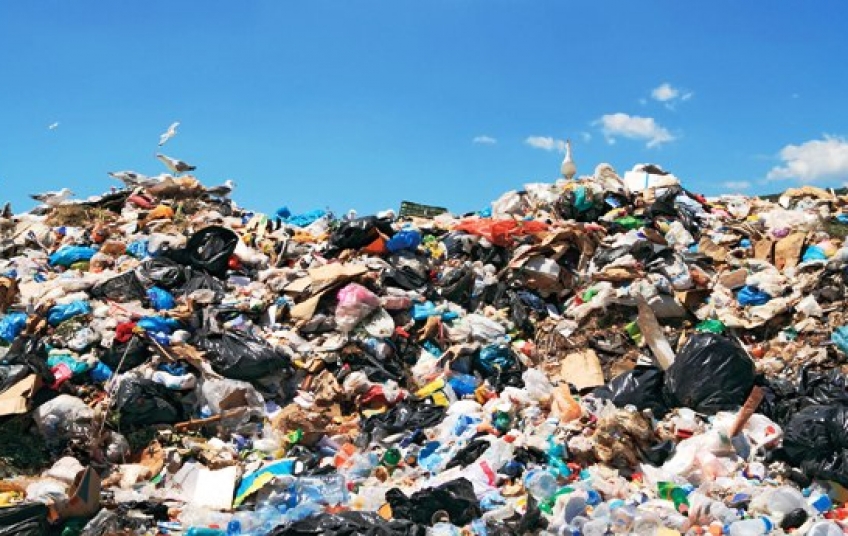Anything that needs to be transported from one place to another requires packaging. Whether it is a food item or a sophisticated medical device, these items must be safely packed so they can be distributed to their intended location. What industries do not consider is that the ultimate destination of most of their packaging is landfills. In the effort of maintaining integrity of their product, many manufacturers end up over packaging.
Packaging specialists are interested in reducing the amount of packaging in landfills, especially in the consumer sector. They focus on solving issues that affect their consumers, such as the fact that blister packaging for small electronics can be up to fifteen times larger than the actual item, or that a potato chip bag is mostly air [1]. Other prime examples include plastic bottles and toy packaging; in California alone, the packaging thrown away constitutes about a quarter of all of the total waste in their landfills [4].
However, there are companies that are working on minimizing their packaging waste. PepsicoTM, which produces LaysTM, PepsiTM, TropicanaTM, and many other common household food brands, has taken the initiative to increase their sustainability, and their focus is packaging and delivery of products. In the year of 2013 alone, the company was able to reduce 11 million pounds of packaging materials, reducing their cost of packaging by $55 million across all of their brands. This proves that reducing packaging, in addition to helping the environment by keeping the materials saved out of landfills, can also be an economic plus for the company, giving companies an incentive to work on the efficiency of their own packaging processes. PepsicoTM also uses recycled post-consumer polyethylene terephthalate plastic or PET for their products, and in 2013, the total amount of material recycled was increased to more than 18 million pounds and 324 million containers from 2010, with the final result of only 7.2% of their total waste being disposed of in landfills. [5]
Another form of waste many do not consider is the waste produced in hospitals and other health care centers. According to a study performed by Brat Kwaykye, Healthcare centers are the second largest contributors to landfills. Healthcare centers are the second largest contributors to landfills. Healthcare centers produce approximately 6,600 tons of waste daily and more than 4 billion tons of waste annually [2]. Some of this waste is considered “red bag,” which refers to the type of hazardous material that cannot be deposited in regular municipal landfills. The other category is regular waste, which is streamed to municipal landfills. “Red bag” materials are much more expensive to dispose. When hospitals sort their trash, the majority of waste is considered “red bag” waste”, but there are a lot of items that should not be considered in that category. Some examples of “red bag” waste that should not be “red bag” waste include: paper towels, suction tubes, batteries, masks, gowns, drapes, linens, tapes and, most importantly, packaging materials. Thirty to fifty percent of the hospital waste stream is packaging. One solution offered is to find ways for packaging to be sent down proper streams—making sure that it was not considered “red bag waste” and is instead processed in the municipal waste stream.
Many hospital suppliers are exploring different ways to become more sustainable. One example of these efforts is Smith & Nephew’s change in packaging for Visionaire™ Tibial and Femoral Cutting Blocks. Initially, these cutting blocks were packaged in two separate trays and cartons. Now, they are packaged in the same tray and carton. The change from 2 to 1 has caused an approximate 50% reduction in packaging material and footprint (about 11,960 lb.) which is an estimated $57,000 in annual packaging costs savings [3]. Other hospitals are working with Stryker, which is the leading program that reprocesses medical devices. Up to 2014, this company has diverted about 10.5 million pounds of waste from landfills, resulting in a $250 million savings in supply costs for the hospitals that work with them. So far, the efforts seem to be focused on how to maintain packaging materials out of landfills in the first place instead of finding ways to better dispose of the waste that is already in the landfills. However, if other companies follow the examples of PepsicoTM and Smith & NephewTM, landfills will continue to grow at a slower rate, allowing for more time to come up with solutions to the waste that has already been created. Because these companies have both shown a significant monetary profit from their attempts to be more waste-contentious, this may be the sign other manufacturers have been waiting to see in order to start making their own packaging processes more sustainable. Ultimately, companies should strive to avoid unnecessary packaging in order to prevent increases in landfill space.
References
Corkum, Kevin. 10 Worst Examples of Packaging Waste. N.p.: n.p., 2014. Web. 19 Nov. 2015. <http://www.postlandfill.org/examples-of-packaging-waste/>.
Kwakye, G., Brat, G. A., Makary, M. A., (2011). Green surgical practices for health care.Archives of Surgery, 146(2)
<http://archsurg.jamanetwork.com/article.aspx?articleid=406778>
Marshall, Paul. "Sustainability Initiatives in Medical Pa." Healthcare Packaging Consortium. Memphis, TN. 13 Nov. 2015. Presentation.
"75 Percent Initiative Packaging-Related Activities." CA Gov. Government of California, 8 Oct. 2015. Web. 19 Nov. 2015.
<http://www.calrecycle.ca.gov/reducewaste/Packaging/75Percent.htm>.
"Packaging Recycling and Waste." Pepsico. Pepsi Company, n.d. Web. 23 Nov. 2015. <http://www.pepsico.com/Purpose/Environmental-Sustainability/Packaging-and-Waste>.
Felton, Ashley. Landfill Face. 2003. Wikipedia Commons. Web. 23 Nov. 2015. <https://commons.wikimedia.org/wiki/Landfills#/media/File:Landfill_face.JPG>.


































